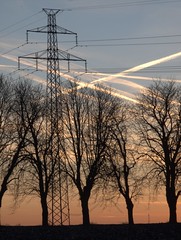Today is International Women’s Day, and LGBG is proud to celebrate this day and to salute women all over the world for their hard work and accomplishments to improve the world.
International Women’s Day (IWD) was first celebrated in 1911 in four European countries. It originally commemorated working rights protests of female garment workers. While these protests actually began on March 7, 1857, the movement became more organized in 1908, where on March 8th, more than 15,000 women marched in New York City, “demanding better pay, voting rights and an end to child labor”. In the ensuing years, IWD observances took place on varying days in March. In reaction to a horrific fire at the Triangle Waist Company building in New York City on March 25, 1911 in which 146 women (mostly immigrants) were killed, a movement was organized to bring attention to the inhuman working conditions of female industrial workers. This effort led to the creation of the Factory Investigation Commission and the passage of laws that mandated “safety standards, minimum wage, unemployment benefits and financial support for aging workers”. In 1975, the United Nations designated March 8th as the official day of observance for International Women’s Day. Over the years, IWD observances have evolved to include observance of advances of women in human rights and discussions of the ongoing challenges women face in all areas of life, including, but not limited to, politics, education, labor and health.
LGBG is especially proud to salute two organizations recently spotlighted on its site. First up is No Water-No Life, directed by photographer Alison Jones. NWNL is a globally focused project that employs photography to document the availability of fresh water resources, raises public awareness and provides education to stakeholders to foster partnerships globally. With a profound understanding and beautifully conveyed message that water is the key to life, NWNL is a dynamic force and important asset to the green movement.
Our second IWD salute goes out to Africa Inside, directed by Lori Robinson. This project promotes wildlife conservation and environmental protection in Africa. LGBG is proud to partner with Africa Inside on its program to eliminate pollution by plastic bags in Africa. With its exchange program, African citizens receive a reusable shopping tote for every 25 bags retrieved from the countryside. To date, this exchange program has been an overwhelming success in not only cleaning up the countryside, but also in educating the citizens on the value of their natural resources and the need to protect them.
LGBG congratulates women globally for their tireless work to make our world a better place to live. We thank you and wish you a Happy International Women’s Day!
Sources for this article:
1. http://www.csmonitor.com/Innovation/Tech-Culture/2013/0308/What-is-International-Women-s-Day-video.
2. http://www.csmonitor.com/World/Global-Issues/2012/0308/International-Women-s-Day-How-it-s-celebrated-around-the-globe/Asia-Pacific?nav=638983-csm_article-promoLink.
3. http://nowater-nolife.org/index.html.
4. http://africainside.org/.










